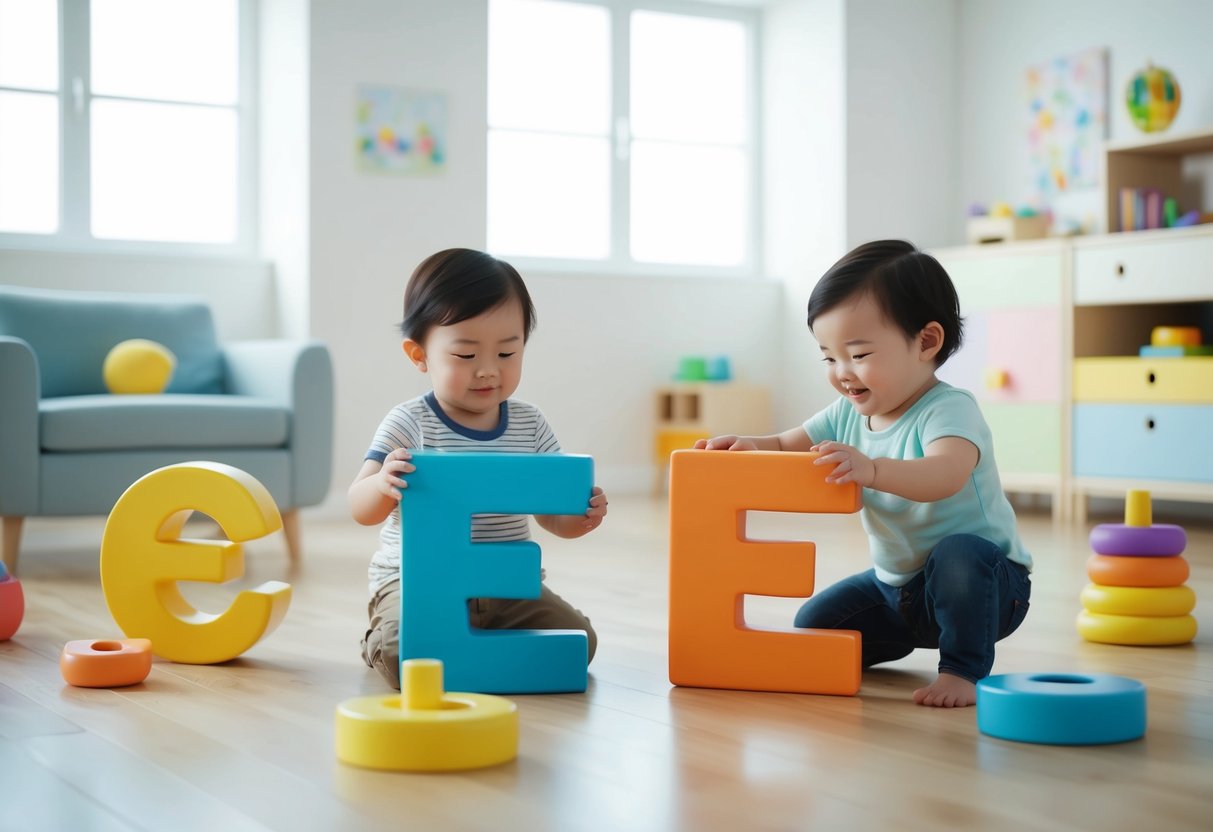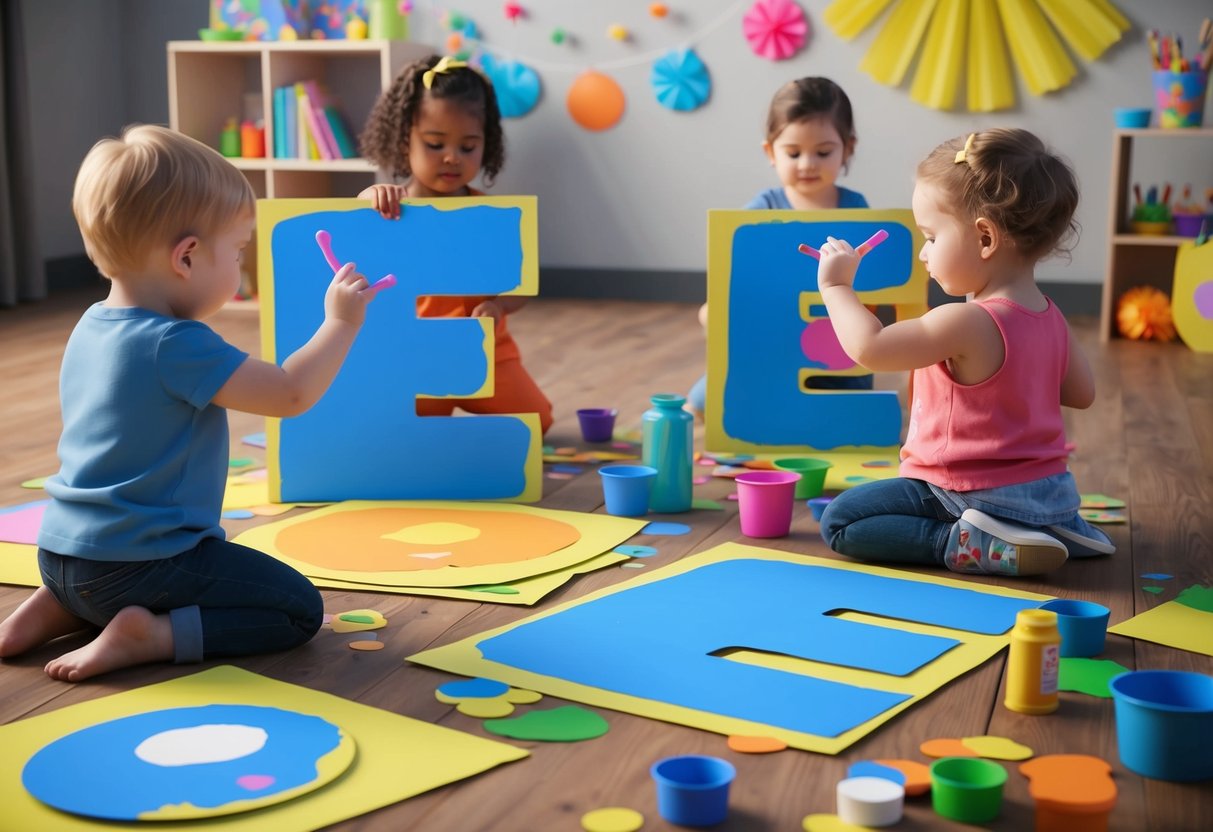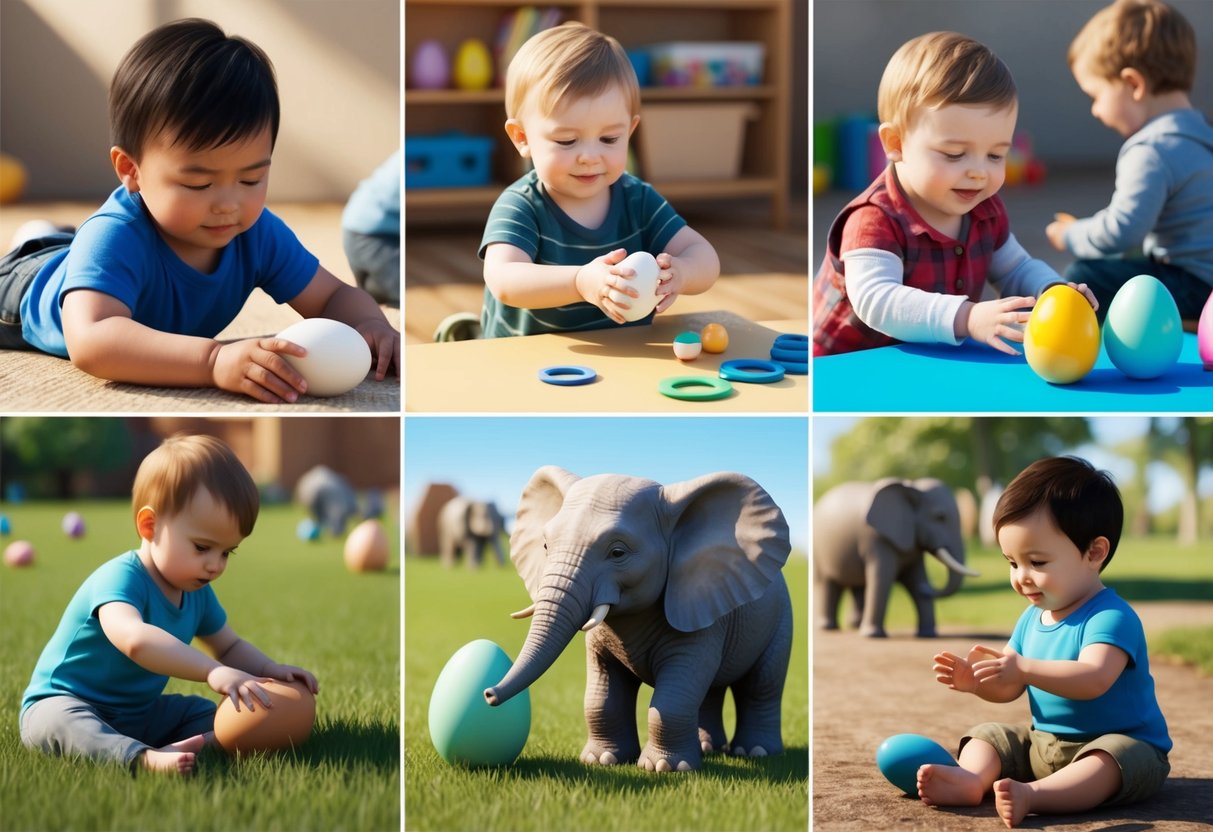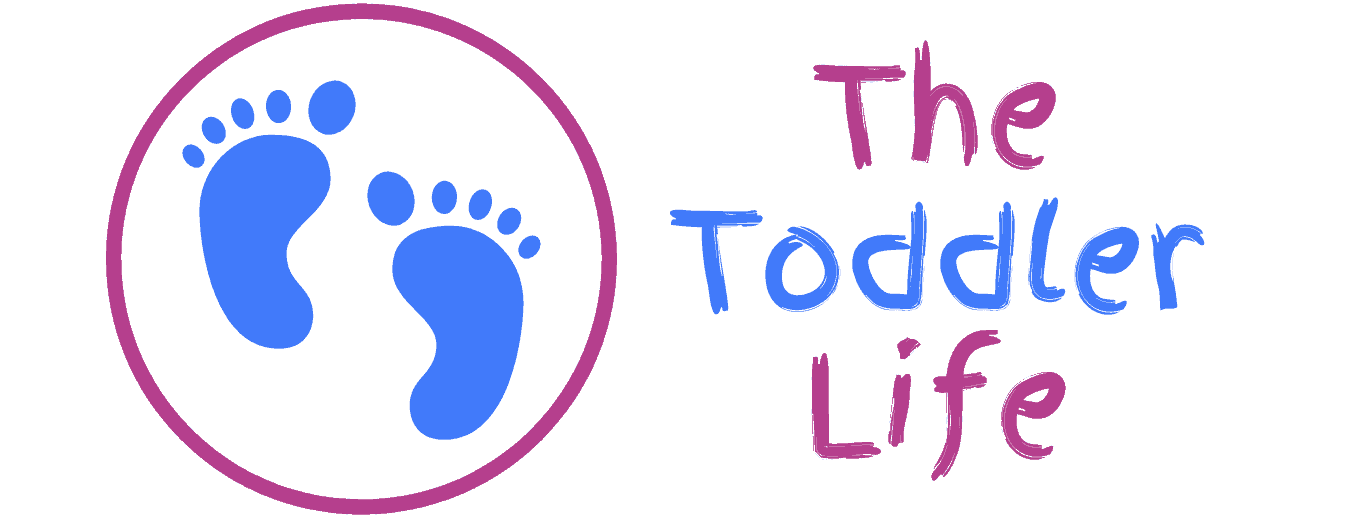Introducing young learners to the alphabet is a vital step in their educational journey.
By engaging in letter ‘E’ activities, toddlers can enhance their letter recognition skills, which is crucial for early literacy.
These activities blend fun and learning, ensuring children develop a solid foundation in language skills.

Activities such as crafts and fine motor tasks excite toddlers while teaching them more about the letter ‘E’.
From creating elephants and painting eggs to singing the ABCs during physical exercises, there are many ways to make learning interactive and enjoyable.
Resources like Fun In Cocoon and ABCmouse offer easy and creative projects that keep young minds engaged while learning.
For parents and educators, incorporating a mix of creative decoration projects and hands-on crafts can foster an enjoyable learning space for toddlers.
By focusing on activities that develop fine motor skills and creativity, each session becomes a powerful opportunity for growth and exploration.
Key Takeaways
- Engaging letter ‘E’ activities enhance early literacy skills.
- Hands-on crafts and motor tasks make learning fun.
- Creative projects support skill development.
Importance of Letter Recognition
Recognizing letters is a key step in early literacy. It helps children learn to read and write. They can identify different letters and sounds, which builds a strong foundation for future learning.
Letter E Activities might be part of a Letter of the Week program. This approach helps children focus on one letter at a time. They get a chance to fully explore each letter’s shape, sound, and use in words.
When kids engage in activities like tracing or coloring, they also improve their fine motor skills. This is important because it strengthens the small muscles in their hands and fingers. It makes it easier for them to write later on.
Here’s a quick list of benefits:
- Identification of uppercase and lowercase letters
- Understanding of sounds associated with each letter
- Boost in fine motor skills
Interactive activities create a fun and engaging learning environment. Children remember better when they are actively involved.
Parents and teachers can support learning by providing plenty of opportunities for practice.
Simple activities make a big difference. Hands-on learning is effective and fun.
For some specific ideas on activities related to letter recognition, consider these helpful resources on letter recognition activities and alphabet matching.
Hands-On Letter ‘E’ Crafts
Hands-on crafts are a fun way for toddlers to explore the letter ‘E’.
Projects like creating elephants, elves, and eagles help children develop fine motor skills while having fun.
E for Elephant Creations
Crafting an elephant is both educational and fun for toddlers. Start by cutting out an elephant shape from gray construction paper. Use a paper plate as the body and add a trunk, ears, and eyes. Toddlers can use glue sticks to attach these parts.
Decorating is an important step. Children can use crayons or markers to add details like toes or a tail. For a textured effect, consider using cotton balls. These crafts encourage children to understand shapes and improve hand-eye coordination.
Easy Elf Figurines
Creating elf figurines introduces children to imaginative play as they make and decorate small elves. Begin with simple materials like toilet paper rolls for the elf’s body. Use felt or colored paper for the elf’s hat and clothing, cutting out shapes to fit.
Toddlers can paste on googly eyes and draw features with markers. Create a simple belt from ribbon and add pom-poms as shoes or hat decorations. This activity encourages creativity and storytelling, as kids can invent adventures for their elves.
Exciting Eagle Art Projects
Making an eagle helps teach kids about birds while focusing on the letter ‘E’.
Use brown and white construction paper to craft the eagle‘s body and wings. The wings can be feathered with cut strips of paper.
Attach the wings to a paper plate to form the eagle. Add a yellow beak and feet to complete its look. This project can be supplemented by talking about eagles, their habitats, and behaviors. These art projects develop fine motor skills and introduce basic biology concepts to eager young learners.
Engaging Fine Motor Activities
Fine motor activities are essential for toddlers as they help develop hand-eye coordination and dexterity.
Using activities like elastic band stretching and eye dropping color mix can be both fun and educational for young children.
Elastic Band Stretching
Elastic band stretching is a simple activity that can greatly enhance fine motor skills.
It involves wrapping elastic bands around a board or a container. This exercise helps strengthen finger muscles and improve hand-eye coordination.
Parents can also add a twist to this activity by incorporating colorful bands to make it visually engaging.
Children can practice stretching the bands over various shapes, which adds a level of challenge and encourages problem-solving.
Incorporating attractive elements like colored markers or small objects, such as googly eyes, can turn this activity into a creative and rewarding experience.
Using different sizes and textures of objects helps to add variety and keeps the children interested.
Eye Dropping Color Mix
This activity merges creativity with skill work.
By using an eyedropper and different colored water, children can create beautiful patterns.
This task is excellent for building the small muscles in the hands and fingers, needed for writing and other tasks later on.
Set up a few small cups of water with different food coloring. Using the eyedropper, toddlers can transfer droplets of colored water onto a coffee filter or paper towel.
As the colors spread, they will mix, creating new shades and effects.
This not only enhances fine motor skills but also introduces basic color mixing concepts.
The activity can be made more interesting by using various shapes of filters or papers. This encourages kids to explore and understand how different colors blend.
Creative Decoration Projects

Creative decoration projects can transform learning about the letter “E” into a fun and engaging experience. These projects focus on using different materials and themes to make learning interactive and playful for toddlers.
Embellishing with ‘E’ Themes
Incorporating themes that start with the letter “E” can make decorations truly special.
For example, creating an “Elephant Wall” involves making paper elephants with detailed ears and trunks. Adding googly eyes can bring these decorations to life, capturing children’s interest.
Another idea is crafting “Earth Mobiles.” They can be made using cardboard circles painted blue and green. Hanging them with string adds a dynamic element.
This activity not only decorates the space but also teaches about Earth-themed concepts. For more ideas, explore the collection of Letter E Crafts on Pinterest.
Exploring Textures and Colors
Introducing various textures and colors helps stimulate sensory exploration.
Felt, fabric, and textured paper can be used to create tactile experiences.
For instance, decorating with felt eggs allows toddlers to touch and feel the different surfaces.
Creating vibrant “E” shaped paintings using sponges is another engaging activity. Children can dip sponges in paint and apply them to paper, encouraging creativity and an appreciation for color mixing.
Adding textures to craft projects makes them visually appealing and enjoyable to explore. ABCmouse offers a range of craft ideas and activities that incorporate textures and colors to engage young learners.
Frequently Asked Questions

Teaching toddlers the letter E can be fun and effective with the right crafts, educational games, and worksheets. Many resources are available online, some of which are free, to support parents and educators in enhancing early learning experiences for young children.
What are engaging ways to teach toddlers the letter E through crafts?
Crafts like creating an elephant mask or making eggshell mosaics help toddlers connect the letter E with everyday objects. These activities enhance creativity while reinforcing letter recognition.
Can you recommend educational games focused on the letter E for 2-year-olds?
Games such as online alphabet matching or apps that involve tracing the letter E can help toddlers engage with the alphabet interactively. These games often use visuals and sounds to make learning exciting.
What are some effective letter E worksheets that can help with early alphabet learning?
Worksheets that involve tracing, coloring, and identifying the letter E are useful. They teach letter recognition and improve fine motor skills. Some worksheets available on SplashLearn offer various activities.
How can I find free and printable resources for teaching my toddler the letter E?
Websites like Teachers Pay Teachers provide numerous free printable resources. Parents can find worksheets, coloring pages, and activity guides to support learning at home.
What kind of activities can I do at home to reinforce my toddler’s understanding of the letter E?
Are there easy-to-setup letter E activities that also incorporate play for young children?
Yes, using toys like an excavator and doing role-play activities can make learning enjoyable.
Setting up play stations with letter-specific items engages toddlers in both play and learning.

